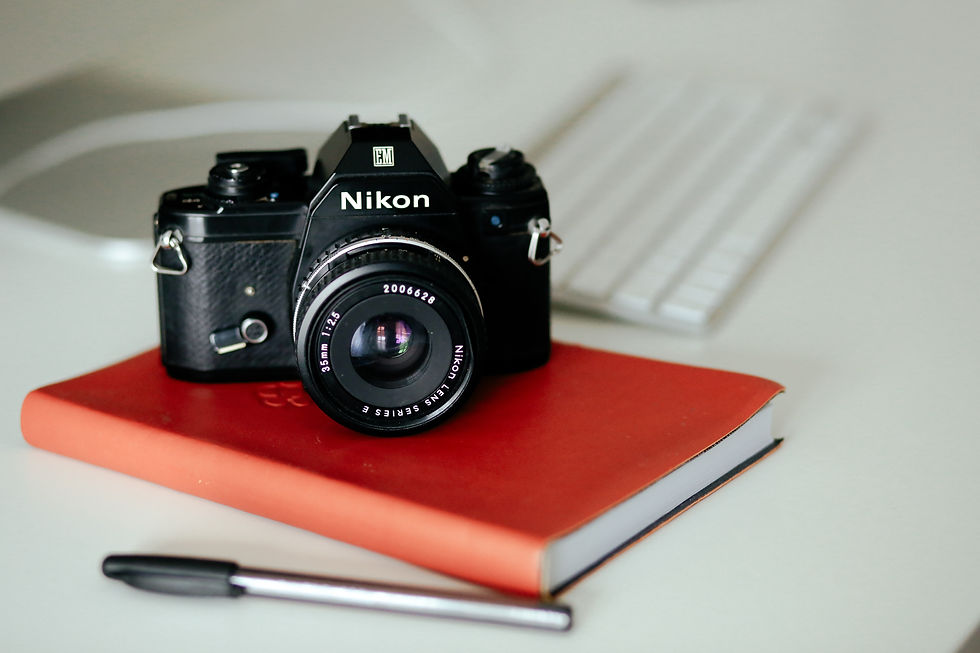6 Ways To Optimize Images On Your Legal Blog
- JC Serrano

- Jul 21, 2021
- 3 min read
Updated: Feb 2, 2022
A Lawyer SEO Guide On Optimizing Images On Your Website
Not only do images make your pages and blog posts look attractive, but they can also directly contribute to your Lawyer SEO. They can draw attention, break up a wall of text, and help readers visualize law-related material. You can also directly optimize tags, descriptions, and file names to boost on-page SEO.

Do Images Affect SEO?
As mentioned earlier, images can help with the user experience. However, images also carry data that search engines like Google can detect (like alt text and captions). Hence, it's essential to know what search engines see when encountering images on your website.
Here's How You Optimize Your Website Images
Aside from optimizing the text around your images, you can optimize the several facets of the image itself. Below are a few ways you can do so.
1. Change The Filename
Before even submitting an image to your website, double-check the image's filename. If it's something like "IMG00183", change it. You want the filenames to be descriptive and informative.
When search engines send bots to crawl your site, they can still see filenames, even when your readers don't.
So don't forget to change your image to something more descriptive.
For Example:
If it's for a Personal Injury Law guide on car accidents, try using file names like the following:
car-accident-lawyer.jpg
personal-injury-damages.jpg
The filename should be descriptive, but they also have to be as brief as possible. Use dashes to separate each word.
Remember: You can definitely use your keywords on your image descriptions. Pull out your keyword planner and see which of them are relevant enough to be used as filenames.
2. Reduce Image Size
The lower the image size, the better. This is mainly because larger photos take longer to load, which might slow down your page. Slow pages can ruin user experience, especially mobile users.
The best way to address this problem would be to use tools and apps to compress your images. This lowers the file size without sacrificing image quality. After all, you don't want to use pixelated images on your legal guides, do you?
After resizing your images, you should export them as PNG or JPG files. These formats work best for web pages.
3. Write An Alt Text
Alt text conveys an image's contents to bots and helps individuals who are visually impaired.
Screen readers can detect alt text, even when it's not showing up on your pages like captions. For example, if you're using an image as a hyperlink to a specific page within your domain, you can include a description of the landing page as the alt text.
As for search engines, crawlers aren't great at deciphering what an image is about. So while image recognition is getting better, bots that crawl your pages still need the Alt text.
Here are other alt text tips to help you out:
When using keywords as Alt text, make sure they're still relevant to the images.
Avoid long, wordy alt texts.
Don't use dashes as you would with filenames.
4. Add A Caption
As mentioned, bots that crawl your website aren't advanced enough to detect what's on an image. So instead, it uses multiple data to infer. These include title, alt text, and captions.
Unlike alt text, captions are visible to your readers. So use them to help with user experience as you see fit.
Remember: Avoid composing lengthy captions. If you're showing a graph or a diagram and you want to explain what it means, just write it in the body of the text directly below the image.
If you have an image gallery, your image title, alt text, and captions can help.
5. Avoid Putting Important Text In The Image
As mentioned, bots aren't advanced enough to read what's in your image file. So if you have quotes, keywords, or text important for your Lawyer SEO, don't put them on images.
If you want to emphasize them, change the text size, font, and indentions instead.
If you're using infographics, make sure you describe them with text search engines can detect. Use keywords in the title, body, and captions.
Remember: Your site ranking doesn't rely on traffic alone. It has to have specific texts and links for search engine algorithms to base its rankings on.
6. Mind Your Image Placement
You can place your photos wherever you want. However, if you want a specific image for search engines to see (like infographics, scanned newsprints, etc.), you should place it near the top of the page with the appropriate alt text, image title, and caption.
Also, make sure that your images aren't affecting the format of the site and the text surrounding them. Bad image placements can also affect a site visitor's reading pace, so watch out for those.
Let LawyerLeadMachine Help Your Firm
Lawyer SEO and content marketing can increase site traffic by optimizing your pages and publishing valuable content. To get you started, review your options here.














Comments